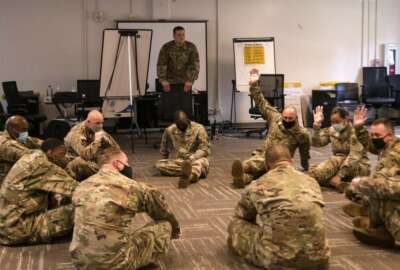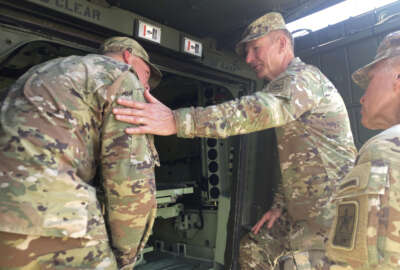
Army changes tack in how it trains recruiters
As the Army looks to another year of recruiting shortages, it takes a new look at how it trains recruiters.
With a continued crisis in its ability to recruit new soldiers, the Army figured it needed to realign the way it trains recruiters. Now the service’s recruiting command has a series of new initiatives in place to remake the face of Army recruiting.
The changes started with leadership as the command called its master trainers back in groups for retraining. At the Army recruiting college, the school that educates new recruiters, officials added two weeks of instruction to focus on new skills and bringing families into the decision-making process.
“Organizationally, if you see the things that we’re doing today compared to the things we did a year ago, they’re not the same. We’ve changed a lot of different things in how we approach training,” said Maj. Gen. Johnny Davis, the commanding general of Army Recruiting Command during an Association of the United States Army (AUSA) webinar Tuesday.
The changes come after the Army fell 15,000 short of its recruiting goal in 2022, with another shortfall projected for this year.
At the leadership level, the Army looked first to the master trainers. They are noncommissioned officers in charge of organizing training at the battalion level. They identify training deficiencies and develop a needs-based battalion training plan, and they conduct primary training for policy, doctrine, and new information management systems.
Davis said the command is going through a 10-week process of bringing in all the master trainers, a total of 150 to 200 throughout the Army, and retraining them. The same will hold true for recruiting commanders.
“I’m bringing in 130 to 150 station commanders from around the world. And we’re going to give them a week of training, giving them an idea what we’re doing in terms of our investment in the force and bring them up to date on what’s going on,” Davis said.
At the frontline level, the command changed the curriculum for how recruiters get trained. To become recruiters, solders go through a six-week Army recruiting course at the command headquarters at Fort Knox, KY. Davis said he added two weeks to the course for additional training. Some of the extra course work concentrates on sales skills, while one week focuses on families.
“It’s focused on the future recruiter and their family, we call that “people week.” We want them to be allowed to be part of the assignment process of where they go,” Davis said.
The new training involves teaching the new recruiters and their families the ins and outs of government housing programs and helping them figure out where they want to be located. For most recruiters, the new assignment means moving away from a military base and living on the economy without the amenities of base living, like commissaries, the PEX, military treatment facilities, gyms, and military schools.
“I understand the complexities and anxieties about a move. So that has been totally transformational in terms of what we’re doing for investing in our families,” Davis said.
By giving recruiters a choice in where they are stationed, the Army hopes they will go to areas where they have a connection to the community and are better able to connect with potential recruits. Davis said in one class of recent graduates, 31 out of 32 recruiters went to their first choice assignment.
“They’re going to be more successful, and their family is going to be more satisfied,” Davis said.
Copyright © 2025 Federal News Network. All rights reserved. This website is not intended for users located within the European Economic Area.
Alexandra Lohr, a former staff member, covered the Defense Department for Federal News Network until September 2023.




